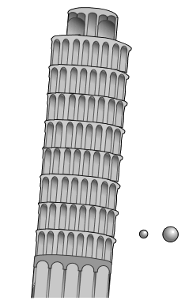Rolling Rubber Bands
August 13, 2010
Rubber bands are useful articles, and are often not used for their intended purpose of bundling things together. I was a child in a large,
middle-class family, and there wasn't much discretionary income available for buying toys. Fortunately, my father had a well equipped workshop, and when he wasn't looking, I would make my own toys. One of these was a projectile gun that was powered by rubber bands. The rubber bands would propel things like sticks through a tube or along a channel in a wood block. It was many years later that I learned about "
zip guns," that operated on similar principles.
Physicists will study anything interesting, and they often come away with some useful result that's applicable to the world at large. One example is the
packing of
M&M candies.[1-2] In this same vein, physicists at
MIT and the
École Polytechnique (
Paris), analyzed the shape of rolling rubber bands. In the interest of reproducibility, their bands were made from
polysiloxane (a.k.a., silicone) and other polymers; and not
natural rubber. To facilitate their experiments, the 46 mm diameter bands did not roll on an inclined plane, but inside a rotating cylinder. To reach the speed required for their analyses, the inclined plane would have needed to be larger than their laboratory. Lack of a large enough laboratory didn't stop Galileo (see figure).

Galileo's experiment at the Tower of Pisa
Illustration by Theresa Knott.
Using digital photography, they found that the bands became more squashed in shape as they were forced to roll faster. At high speeds, the roughly circular bands become more peanut-shaped, until a critical speed was reached. At that speed, the upper and lower portions of the loops came into contact, and the resulting
friction caused them to be ejected from the rotating cylinder.[3]
Of course, experiment is never the end of the game. Scientists try to understand what's happening by constructing mathematical models. The obvious quantities in play in this system are
gravity and
centrifugal forces; and the bending forces and
stiffness of the loops. When the bands are at rest, the slightly collapsed shape arises from the balancing of the material stiffness with gravity. During high speed rotation, the rotational forces cause the loop to collapse.
These results are not limited to rubber bands. Generalizations can be made for other
elastic materials, since similar forces are in play. The researchers note a similarity to rolling liquid drops and
red blood cells.[4] Rolling droplets have a similar peanut shape. This research is published in a recent issue of Physical Review Letters.[5]
References:
- M&M's obsession leads to physics discovery, CNN.com (February 16, 2004).
- Karla Soule, "Random Packing Density," PhysicsPlanet.com
- Karen Fox, "The Physics of a Rolling Rubber Band," Science Magazine (July 28, 2010).
- David Ehrenstein, "Why a rolling rubber band squashes," Physical Review Synopsis, July 23, 2010.
- P. S. Raux, P. M. Reis, J. W. M. Bush, and C. Clanet, "Rolling Ribbons," Phys. Rev. Lett. vol. 105, 044301 (23 July 2010).
Permanent Link to this article
Linked Keywords: Rubber bands; middle-class; zip guns; packing; M&M candies; MIT; École Polytechnique; Paris; polysiloxane; natural rubber; friction; gravity; centrifugal forces; stiffness; elastic materials; red blood cells.